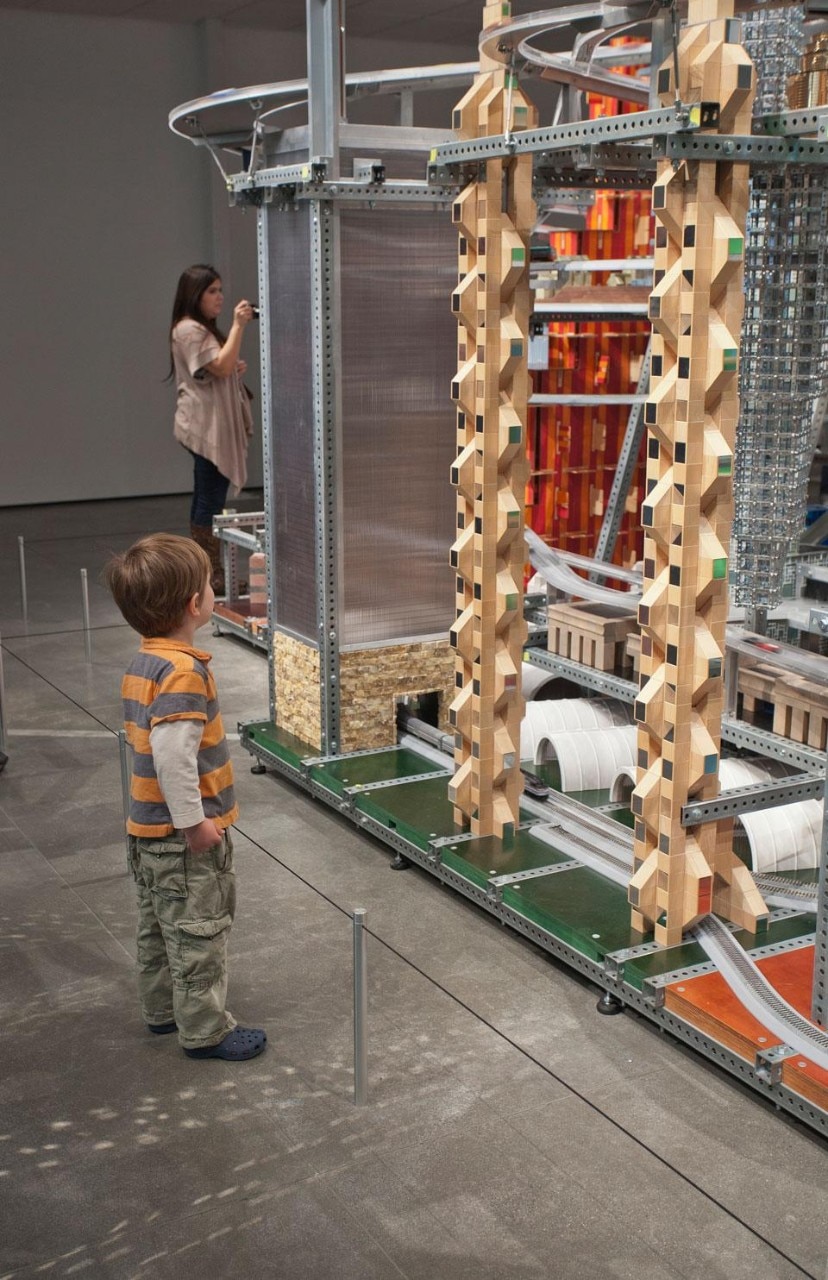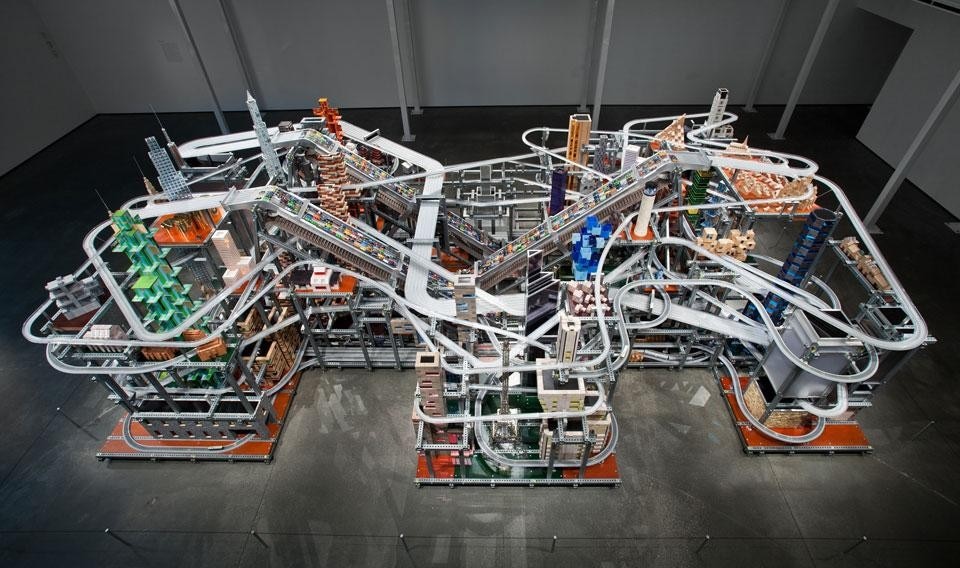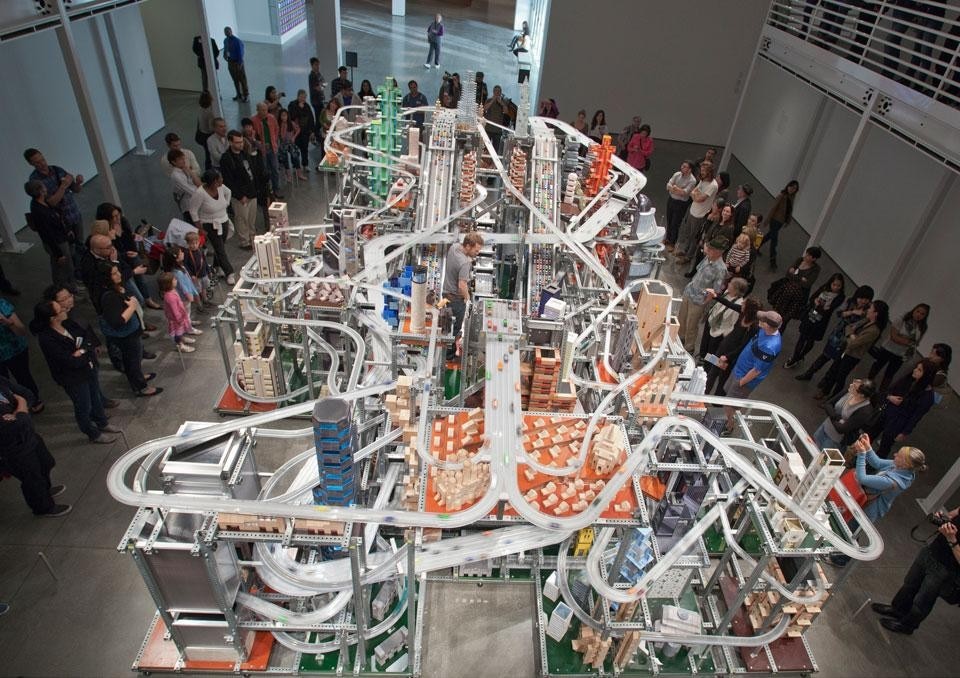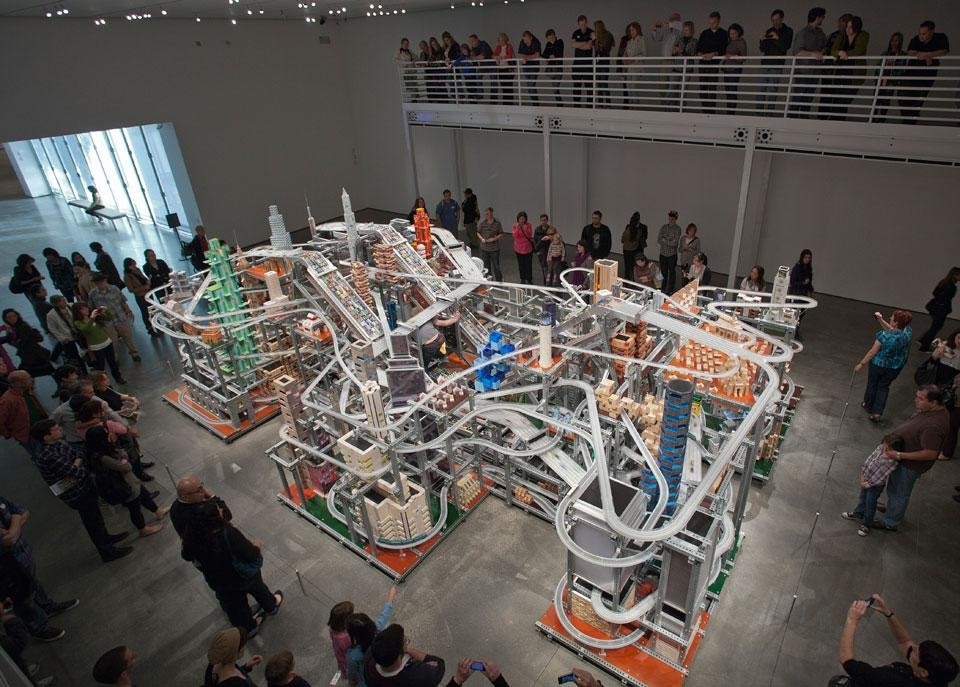
Metropolis II refers specifically to an idealized version of Los Angeles in the future when traffic will flow at ten times the rate it currently does. Industrialized modes of transport such as motorized cars – both automated and controlled by satellites, with the ability to travel speeds between 200 and 300 miles per hour, will decrease the length of time to get from Point A to Point B. In the course of an hour, 1,100 customized Hot Wheels cars zoom around the 18-lane track at speeds of 240 miles per hour. This is equivalent to approximately 100,000 cars circulating through the sculpture in an hour. In a city like Los Angeles, with heavy traffic and automobile congestion, such changes in speed and shorter destination times would appear to be welcome.

This relationship between the observer (us), the passenger, the automobile and the city is what is most compelling. Looking into this fictitious city, we are able to see the desensitization to what it is that is exactly around us. For example, a miniature version of the Eiffel tower, modeled with erector set pieces, somehow finds its way into the landscape. To the observer it is recognizable, however to a passenger in the vehicle that is whipping around the track at approximately 240 miles per hour, it just becomes another object in the landscape that is unreadable. Consequently, the roadways become the landscape.
Cars become the heart or the pulse of the city. Movement, in the form of automobile traffic, is what informs the landscape of the city and the relationship between the individual and the built environment.

The 20x30-ft sculpture occupies the room, constructed with steel beams forming an electric grid interwoven with an elaborate system of eighteen roadways, including a six-lane freeway (perhaps a reference to Los Angeles' infamous highways), train tracks, and hundreds of buildings made from various common childhood building materials such as Lego's, Lincoln Logs, wooden blocks, Erector Sets, as well as the Eames Office's House of Cards.

For Burden, the installation was not about trying to make a full-scale model of the city but instead "evoking the energy of the modern city." By conveying that energy through transport he minimalizes the buildings and the people that make up a city. Yet, he does make it impossible to ignore the human being standing in the middle of this massive sculpture operating the device, as well as managing potential pile-ups of automobiles as they whip around the track. Perhaps, the human component is not lost and can never be – even in this utopian reality that Burden creates.
Chris Burden's Metropolis II (2010) is on long-term loan to LACMA, and is currently on view during the Museum's operating hours (only operative Friday through Sunday) on the first floor of the Broad Contemporary Art Museum. Danielle Rago
Metropolis II
Los Angeles County Museum of Art
Ongoing

